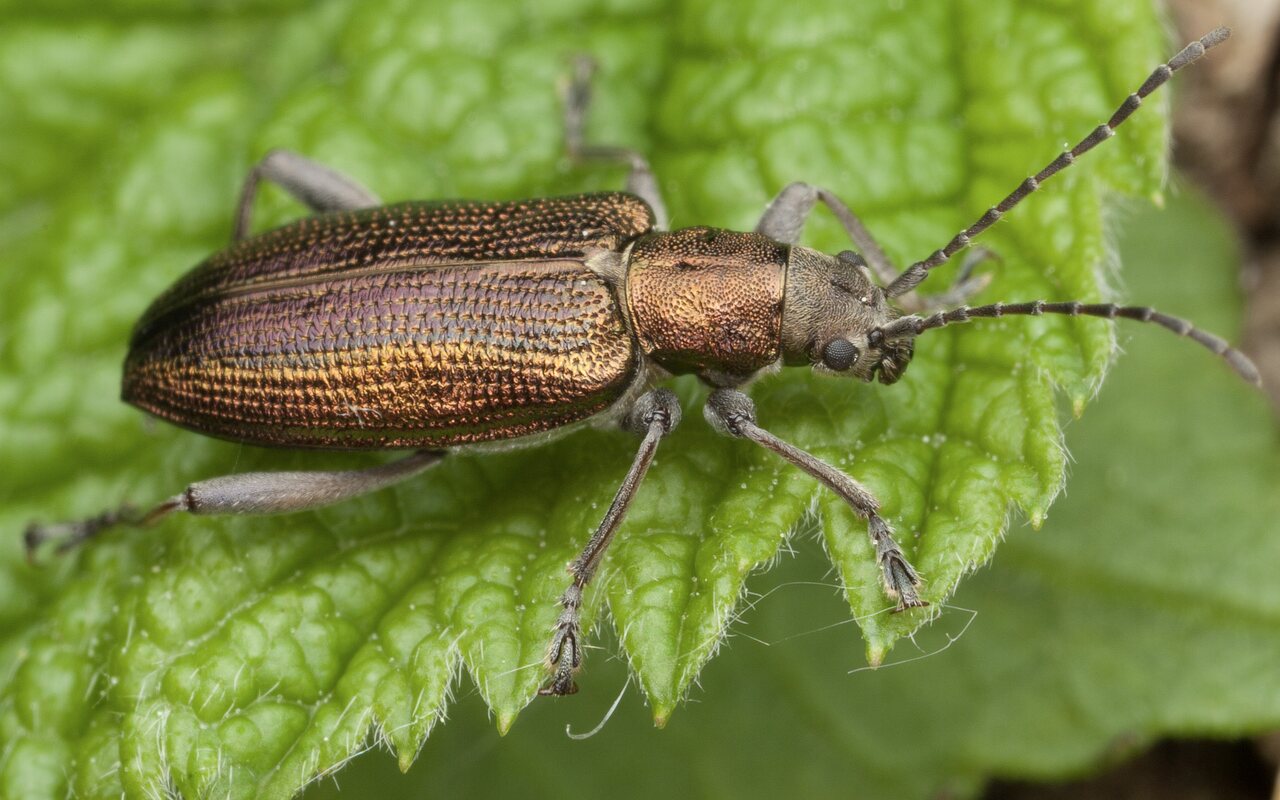
Donacia semicuprea · monažolinė donacija
- grooved leaf beetle
- Wasserschwaden-Schilfkäfer
- monažolinė donacija
- rzęsielnica mannówka
- Jättegröebock
ukbeetles.co.uk/donacia-semicuprea Adult beetles feed on leaves Glyceria maxima and Glyceria notata. The pupa develops among the roots of Sparganium erectum. The larvae feed on roots and leaves of the large Manik different kinds of manna (Glyceria)
Typical habitats are beside open and shallow, still or slow-moving water where the host forms extensive growths; canals, reservoirs, gravel-pits and lakes etc. They appear early in the year, late March or April, and by mid-May are abundant and obvious on the host; they feed on the upper surface of the leaves, stripping the epidermis and leaving characteristic wrinkled and translucent strips parallel to the central rib, and during wet or overcast conditions when they are inactive, they are the easiest way to detect the presence of the species. They are active in warm weather and easily seen among the foliage; they fly well and are easily sampled by sweeping. The females lay small batches of 20 to 30 eggs on the inner surface of submerged leaves from May to August, and the larvae have been recorded feeding within the roots of the host from mid-June; they may take 2 seasons to fully develop as the life cycle is thought to take 3 years to complete. Pupae have been recorded in cocoons during September and October and the adults probably eclose at this time and overwinter within the cocoons.
6-9mm. overall metallic bronze with green overtones; when viewed from above the elytra appear green laterally. Head, scutellum and underside with fine grey pubescence; body otherwise glabrous, or nearly so. Head finely and densely punctured, generally more sparsely so over the vertex, with a well-defined longitudinal impression on the vertex, frons convex and smooth; without a furrow beside the eyes. Antennae usually entirely dark. Pronotum quadrate with strong and dense punctation which is generally not confluent; the cuticle smooth and shiny.
Donacia vulgaris is similar but the pronotum do not has a pronounced central longitudinal groove.
‥
0 comments
Add a comment